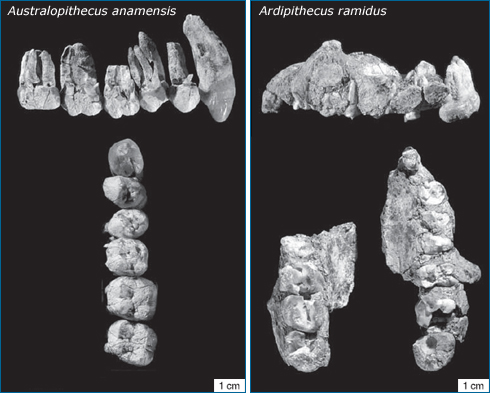The hypothesis that ramidus and anamensis are parts of a single evolving lineage is contentious — and evidence that would either strongly support or contradict it is hard to come by. In the same way that seeing Superman and Clark Kent in the same room together would contradict the idea that they are the same person, the most conclusive evidence in this case would be to find ramidus and anamensis fossils together, contradicting the hypothesis that they form a single lineage. But no one has yet turned up such a decisive clue.
Detractors further argue that the 300,000 years between the oldest ramidus and the youngest anamensis is not enough time for one to have evolved into the other. After all, the teeth of the two species are quite different. If ramidus and anamensis are really snapshots in time of the same evolving lineage, how could they have changed so much in 300,000 years, which is the blink of an eye in terms of evolutionary history? This question brings Leslea’s story full circle, back to her work on baboon teeth…

Get tips for using research profiles, like this one, with your students.
